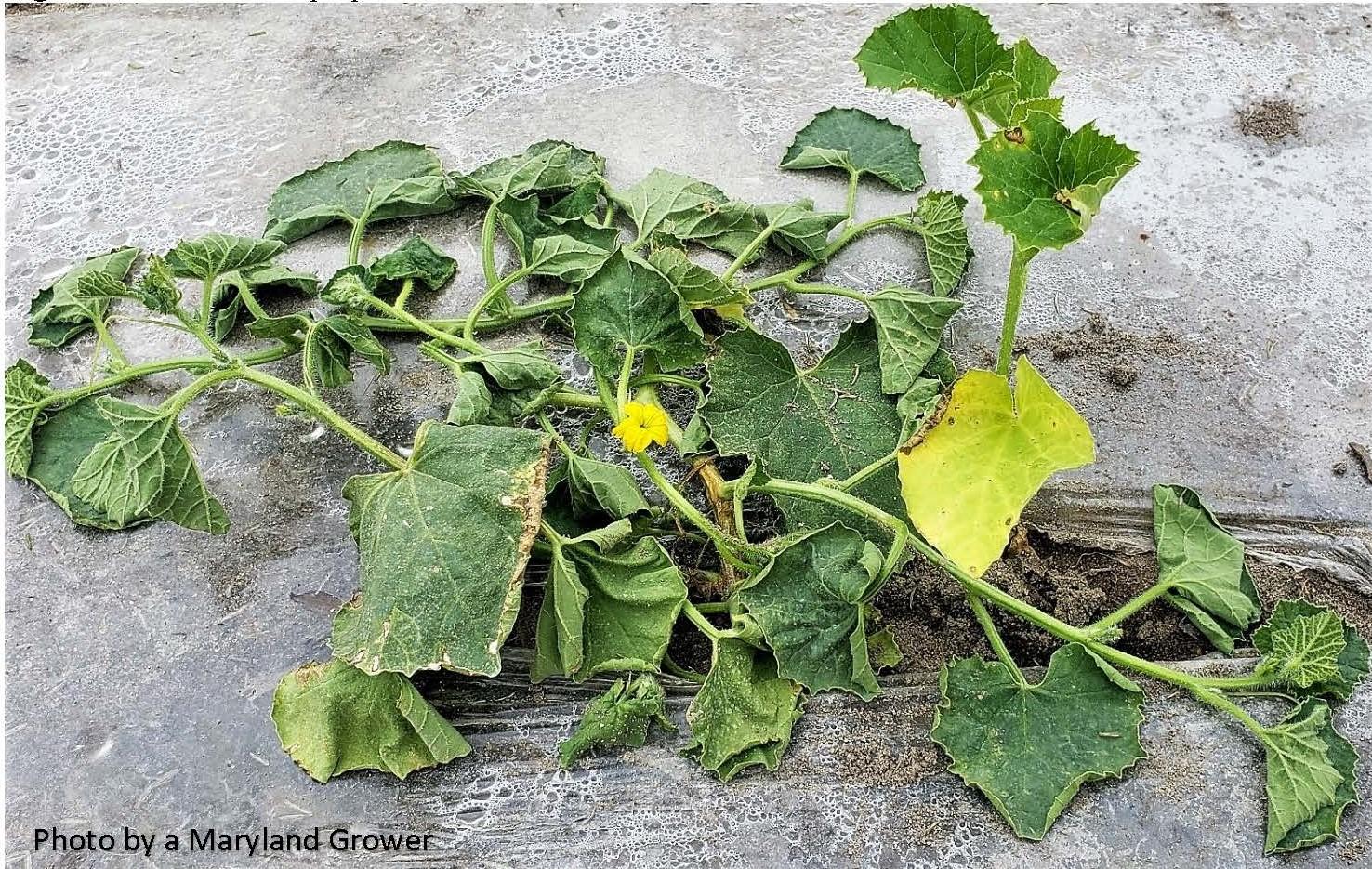Gummy Stem Blight in Cantaloupe
Gummy stem blight (GSB) was found in an Eastern shore muskmelon field in the last few weeks. It is a cucurbit disease caused by the fungal pathogen Didymella bryoniae. This fungus is favored by cool to warm, rainy weather. It can infect a host at any stage of growth and affects almost all parts of the plant including leaves, stems and fruits. The earliest symptom of gummy stem blight is usually an odd-shaped lesion on the leaf (fig. 1). Often, these lesions are first observed on the vines or on leaf parts that are shaded or that collect moisture for long periods. Lesions on muskmelon leaves are usually a light brown to tan (fig. 1), while lesions on watermelon leaves tend to be a darker brown. Infected stems at first show water-soaked lesions (fig. 2) that later appear tan. Older stems, particularly of muskmelon, show pycnidia (tiny black dots) within the infected tissue (fig. 2). These stem lesions often exude a gummy, reddish-brown liquid (fig. 2). Gummy stem blight may become established in the transplant greenhouse from contaminated seed or transplants, or from poor sanitation. A short time after some of these transplants go to the field they can unexpectedly wilt and die (fig. 3).
D. bryoniae survives in seeds, on surrounding weeds, or on organic debris from previously infected cucurbits. Without a host, the pathogen is able to overwinter and survive for over a year as hardened masses of hyphae. The pathogen is moved from infected hosts to other plants via ascospores carried by the wind and by conidia that are spread by water splash. Temperature and moisture are both important for infection and symptom development, but moisture causing a leaf wetness of 1 to 10 hours has the greatest influence. The optimal temperature for the disease to establish itself in a plant varies; for watermelon and cucumber it is 75-77° F but for muskmelon it is only 65° F. The optimal temperature for muskmelon is thought to be lower because the plant’s resistance increases as temperatures increase. Therefore, it is important to closely watch for GSB development in cooler weather in muskmelon. Physical wounding by mishandling or by striped cucumber beetle or aphid feeding can predispose plants to infection.
Best preventative chemical management includes: Chlorothalonil that is mixed with another product such as prothioconazole or tebuconazole. Another good option is mixing chlorothalonil with Luna Experience, which has tebuconazole and fluopyram. You also can check other spray options for muskmelon and other cucurbit crops in the Mid-Atlantic Commercial Vegetable Production Recommendations guide.


